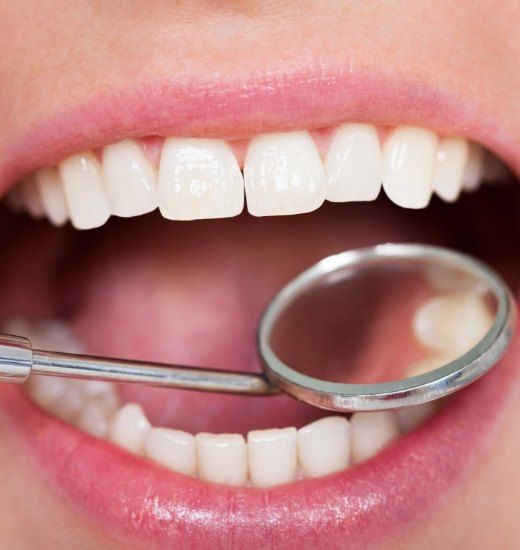Tooth-Colored Fillings – Sugar Land, TX
A Beautiful Way
to Fix Cavities
When teeth aren’t properly cleaned with regular brushing and flossing, plaque and debris accumulate on tooth surfaces and along the gum line. This can lead to the development of gum disease as the bacteria in plaque attack the gums. The acid-producing bacteria can also cause damage to the tooth enamel, eventually creating cavities. To prevent the damage from reaching the pulp of the tooth (which will need a more extensive treatment called a root canal), it will need to be filled in. Tooth-colored fillings are now one of the most popular solutions for treating dental cavities.
Why Choose My Smyle Dental for Tooth-Colored Fillings?
- Beautiful, Long-Lasting Materials
- Patient-Centered, Gentle Services
- State-of-the-Art Dental Technology
What are Tooth-Colored Fillings?

Dental fillings are most commonly used to treat cavities, but they can also be used to repair cracked or broken teeth, or teeth that have been worn down through misuse (such as nail-biting or tooth-grinding).
Advantages of Tooth-colored Fillings

In addition to providing an aesthetic advantage – tooth-colored fillings can match the surrounding teeth and appear less noticeable than other materials – this type of filling is also very versatile and offers additional support, as it chemically bonds to the tooth structure. It also spares the tooth in the preparation, needing less of it to be removed compared to amalgam fillings.
Procedure for Tooth Fillings

To fill in a tooth, the dentist will first use a local anesthetic to numb the area around the tooth being treated. An air abrasion instrument or laser will then be used to remove the decayed portion of the tooth. The area will be tested to ensure that all decay has been removed before the space is prepared to receive the filling. The tooth will be cleaned of bacteria and debris. If the decay is near the tooth root, a liner made of glass ionomer, composite resin, or other materials may be placed to protect the nerve.
Once the cavity has been prepared, the tooth-colored filling (made of a composite resin material) will be applied in layers. Doing so helps to strengthen the filling. As each layer is applied, it will be cured, or hardened, using a special light. When all the layers have been applied, the filling will be shaped to fit with the rest of the teeth and provide the patient with the correct bite. Excess material will be trimmed off, and the filling is finished off with a final polishing.
